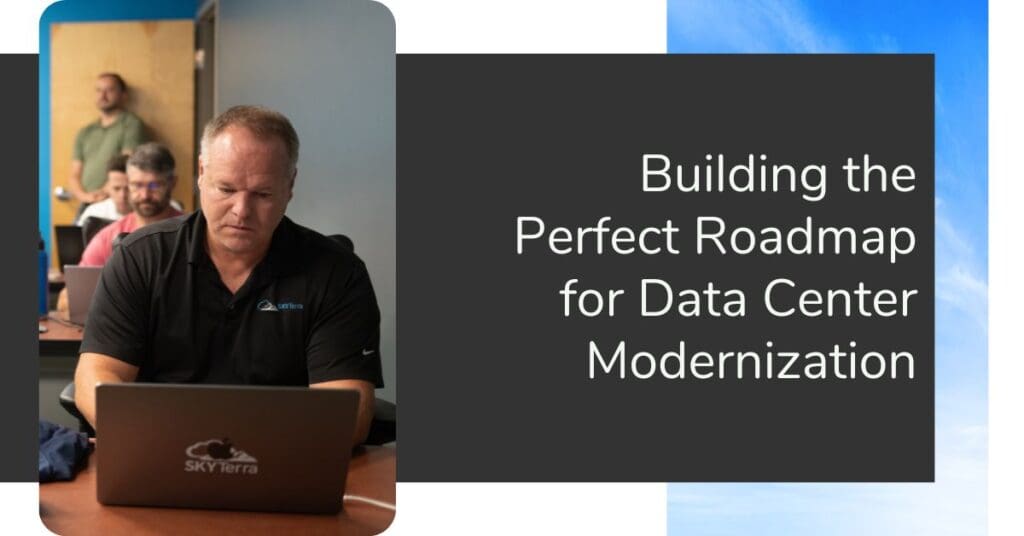How to Create a Roadmap for Successful Data Center Modernization

As a business owner or IT leader, how can you ensure your IT infrastructure remains agile, scalable and secure? One of the key strategies to achieve this is through data center modernization. By updating your existing systems, you can unlock higher performance, lower costs and reliability. But where do you start?
Crafting a detailed roadmap is essential for a successful modernized journey. Let’s dive into how you can create a roadmap that will guide your organization through this specific type of transformation.
Assessing Your Current Infrastructure
Before you begin your journey toward modernizing your data, it’s crucial to assess the current state of your IT infrastructure to identify any outdated hardware, inefficiencies and bottlenecks that slow down your systems. This assessment allows you to understand your gaps and see opportunities for improvement. It also provides a benchmark to measure the success of the modernization process.
You’ll want to ask questions like:
- How old are our current data center systems?
- Are we maximizing energy efficiency?
- What are the biggest pain points our team faces in terms of IT infrastructure?
Or if we are being honest: What keeps you up at night? With this information, you can begin to pinpoint where investments are needed.
Defining Your Goals for Data Center Modernization
Once you’ve assessed your infrastructure, the next step is to define the goals of your data center modernization. Do you need to improve scalability, reduce costs or ensure better security? Maybe you’re looking to leverage new technologies like cloud computing or automation. Clearly defining these objectives will guide the entire process and ensure that your modernization strategy aligns with your broader business goals.
For example, modernization can help by:
- Automating routine tasks: If improving operational efficiency is your main goal, you might focus on automating routine tasks.
- Transitioning to a hybrid cloud: If scalability is a priority, transitioning to a hybrid cloud model could be the right approach.
- Enhancing security solutions: Security enhancements might involve updating to more advanced cybersecurity solutions.
Setting these priorities helps focus your modernization efforts on what matters most.
Planning for Cloud Integration
One of the most important components of modernizing a data center is cloud integration. Whether you’re adopting a fully cloud-based environment or a hybrid model, moving some workloads to the cloud can significantly improve agility and reduce overhead costs. Cloud services allow for on-demand scalability and better disaster recovery options.
It’s important to choose the right type of cloud model for your needs, whether public, private or hybrid. Partnering with a Microsoft Tier 1 Cloud Solution Provider like SkyTerra can help you navigate this choice. Our team will ensure a seamless integration that minimizes downtime and maximizes efficiency.
Establishing a Realistic Budget (Cost, Scope and Scale)
While the benefits of data center modernization are substantial, it’s essential to set a realistic budget. Costs can vary depending on the scope of the project, the technology you need and the scale of your operations. Some expenses may include new hardware, software licenses or cloud services. Understanding your financial constraints will help you prioritize initiatives and allocate resources effectively.
Remember that modernization is an investment in the future. Though it may require upfront costs, the long-term savings through improved efficiency, reduced maintenance and enhanced data security are significant.
Creating a Phased Implementation Plan
Implementing a data center modernization strategy doesn’t have to happen all at once. In fact, taking a phased approach often leads to better outcomes. Begin with the most critical areas that need immediate attention — such as upgrading legacy systems or moving to cloud-based solutions — then gradually roll out other improvements. This method allows for testing and refining at each stage, ensuring a smoother transition.
A phased implementation plan also helps reduce disruption to daily operations. By tackling one part of the data center at a time, you can maintain business continuity while improving your infrastructure.
Focusing on Security and Compliance
As you modernize your data center, maintaining security and compliance should remain top priorities. Many industries, such as healthcare, legal and finance, have strict regulations regarding data storage and protection. Ensure that your modernization plan includes upgrades to security protocols, firewalls and access control systems to mitigate any risks.
Partnering with a trusted provider like SkyTerra ensures that your data remains secure during the modernization process. Our deep experience with cloud integration and data center solutions guarantees that your organization will meet all industry compliance standards.
Training Your Team and Monitoring Progress
Finally, a successful data modernization project requires ongoing training and monitoring. Ensure your IT team is well-versed in the new technologies you’re implementing. Ongoing education will help them maximize the benefits of these upgrades.
Additionally, monitoring the performance of your newly modernized systems is key. Regularly check metrics like speed, uptime and energy efficiency to ensure your goals are constantly being met.
Ready to Modernize Your Data Center With SkyTerra?
Modernizing your data center is no small task, but with a clear roadmap in place, your organization can enjoy the benefits of improved agility, cost savings and enhanced security. By assessing your infrastructure and focusing on security, you can ensure a smooth and successful transformation.
If you’re ready to begin your journey toward data center modernization, SkyTerra can guide you through each step. Contact us today to take advantage of leveraging technology to stay competitive and secure. Let us help you create a detailed roadmap to success.
